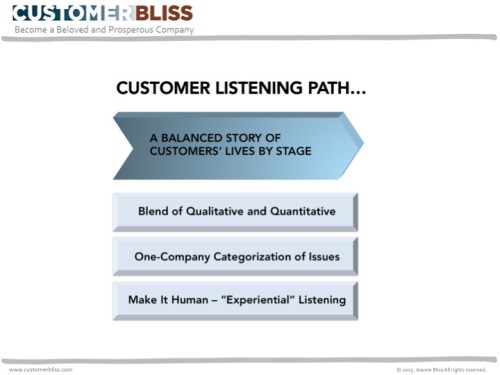
With a customer listening path in place, your leaders and the organization will become personally involved in understanding the lives of your customers.
Your customer listening method will provide a constantly refreshing source of information organized by journey stage. Leaders will be able to understand customers’ lives with a connection to customer behavior and growth, as well as to the data.
This common path will galvanize leaders to focus on the few key areas of improvement connected to customer growth, driving greater results and increased understanding of this work.
How Adobe Grows Long-Term Relationships
‘Lambert Walsh is Vice President and General Manager at Adobe, where he leads Adobe’s efforts to retain and grow long-term relationships with customers and partners across all segments and lines of business. He has led customer success at Adobe since 2007.
For Adobe’s business I’ve always been a strong advocate regarding Adobe’s customers being more than numbers on a page, metrics of revenue bookings, or dollars on a balance sheet. We strive to never lose sight of our customers’ humanity and understanding from them what they expect from Adobe.
Our transition to a cloud services provider has heightened the urgency and criticality of customer retention; however, we recognized the importance of immersing leaders and teams across Adobe in our customers’ experience long before that change in our business model. We originally focused on gaining a greater understanding of customers with data and information, and found we could have moderate success and make real changes for our customers based on the results of surveys and feedback. That said, Adobe is a company with deeply passionate customers, and we knew we needed to do more. We started the Customer Immersion Program in 2011, with the idea that we had to throw back the covers on all of our work and immerse ourselves in understanding what it was like to be an Adobe customer. We had to engage ourselves personally in our own customer experience.
Humanize the Problems Customers Encounter
Every VP was required to go through the Immersion Program – with financial incentives attached to going through the program and becoming personally involved in solving some of the issues encountered. Like any change initiative, the significance of the program wasn’t immediately apparent to some while others jumped in right away. We took a first step with the immersion program because it was our opportunity to humanize the problems customers were having; to take customers ‘off the page’ – off of scorecards and metrics sheets and act with greater urgency to understand the customer experience and respond to their needs. Here’s some of what we learned:
- Many of our leaders and managers didn’t know first hand what it was like to be an Adobe customer. They didn’t access products or services through the same channels customers did so they didn’t always understand that certain policies or business processes might have unintended implications for customers.
- The data alone isn’t enough. Once people walked in the customers’ shoes, bigger change began to happen more quickly.
- Immersion exercises needed to run the gamut from simple to difficult. Participants do all the things customers do every day, like signing up for an account or accessing services. The program works. We started seeing senior leaders who had completed the program then sign up their teams across the company to get more real-life, first hand customer perspective.
Since it’s launch, we’ve extended the Immersion program to leaders across Adobe – more than 2000 people have completed a version of the program. We knew we were having impact when people started coming to me asking for the next phase.
Find links to the Customer Experience
Our CEO champions the continuation of these immersion experiences so that we continually help leaders understand how they and their teams positively impact the customer experience. Through this process we’re able to make explicit links to he customer experience. For example,
- Legal the link may be the wording and terms of a contract
- Human Resources, it could be establishing a hiring profile
- Finance it could be more along the lines of making billing systems more simplified and intuitive
The customer experience is a shared responsibility; it’s not simply the job of Customer Care.
Conclusion
Your Customer Listening Path will unite leaders and the organization in understanding experiences impacting customer growth or loss. With competency 3 you build a one-company method to present customer feedback to tell the story of customers’ lives.



